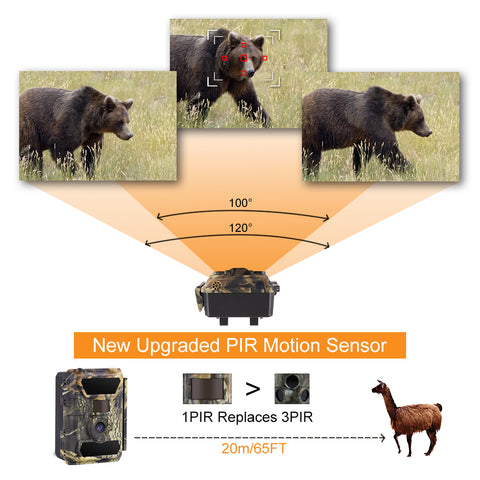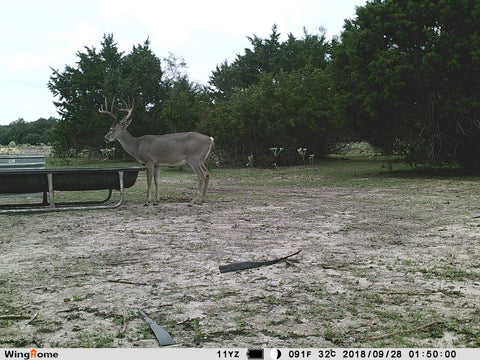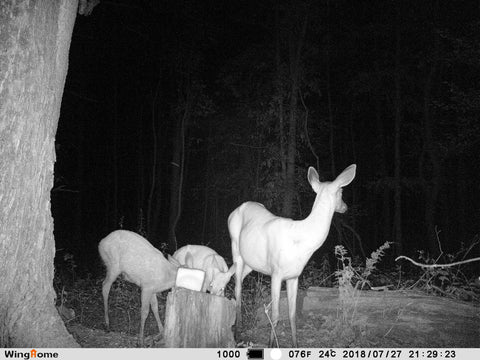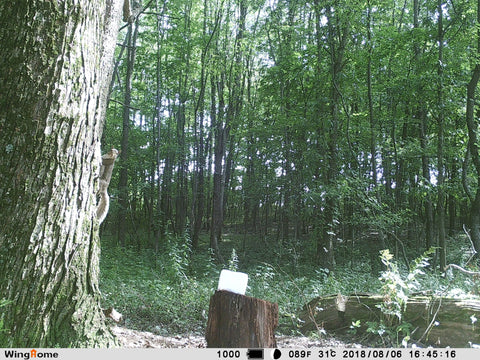Due to the development of technology, trail cameras have become an essential hunting tool. Actually, trail cameras have been widely used in various occasions, even homeowners who have strong safety awareness and animal protection groups are taking full advantages of trail cams nowadays. But how do trail cameras work to achieve the results we enjoy so much?
As we all know that most outdoor cameras need the presence of a human to operate it, but trail camera is self-powered, if you have set it in a certain mode, it will always stand by and ready to take pictures. Besides, they are durable, waterproof, and supports to capture and record photos&videos during day and night.
PIR Sensor
"PIR" stands for passive infrared. All objects on earth emit infrared radiation, and can be detected by heat. Therefore PIR sensors are known to work best when there is a bigger variance in temperature between the animal and the outside temperature. PIR Angle refers to the degree that the camera can sense movement. Trail cameras that have a large PIR Angle can detect movement faster and have a better chance of capturing the subject.
WingHome 290C game camera takes the new PIR sensor technology to realize fast motion detective. Instead of 3 sensor-type, the old technology in which there are one core sensor plus two assistant sensors, WingHome's one enhanced PIR sensor can perform more efficiently and means less space occupied and good for efficient waterproof. And using a high-quality trail camera normally has a 60° angle and captures anything passing by.
Trigger Speed
Trigger speed, also known as shutter speed, is the time that it takes for the camera to take picture after it has detected motion. Trail camera trigger speeds vary from 0.1 seconds to 4 seconds according to different brands. It has to be mentioned that WingHome trail camera has a super fast trigger speed less than 0.4s, which means you cannot miss any fast moving target with it.
Detection Zone
A detection zone, also called detection area, is the area of which a trail camera will pick up thе motion оf animals and then take photos. The detection zone ѕрrеаds оut іn a V shape fоrm. The higher the range of detection it allows, the wider zone it will capture images. When you choose a trail camera, you should pay attention to the detection distance, or how far away an animal can be captured with this camera. WingHome Trail Camera 350C have a detection zone as far as 20m/65ft, you will never miss any wild animals walking by or theft invading your home.
Recovery Time
In short, the recovery time is how quick the camera stores the 1st image and gets ready to take the 2nd one. Recovery time ranges wildly with different brands. Slower recovery time means you might miss snapshots of a buck chasing his doe.
Picture Quality
Frankly speaking, all we want from the trail camera is photos (including videos). There is no doubt that the image quality is the decisive factor in evaluation a camera.
However, seeing is believing. Please don’t be fooled by the ads. You’d better check the sample photos of each brands, and you can decide which brand to buy as long as you know the details, like color, clarity, resolution and contrast of the samples taken by this camera.
Here are samples taken by WingHome 290C:


Battery life is a way to measure the performance of battery, we can simply know how long a camera will last in the wild before it totally runs out. We need our camera work as long as possible. WingHome trail camera remains active 5~8 months with brand new 12 AA Alkaline or Ni-MH batteries.
Hope you have a better understanding of how trail cameras work now. This passage can help you to make a decision of choosing a suitable and better trail camera. Actually, the best way to be familiar with your trail camera is spending more time with it in different modes, the experience you gain from each operation will be very valuable and make yourself proud.
WingHome Trail Camera Buy NowLearn More
Empty content. Please select category to preview
Subscribe to nail your wild games
Receive valuable hunting strategies and tips on bowhunting, food plot, trail cam scouting and rut-season dos and don'ts.

0 comments. Write a comment